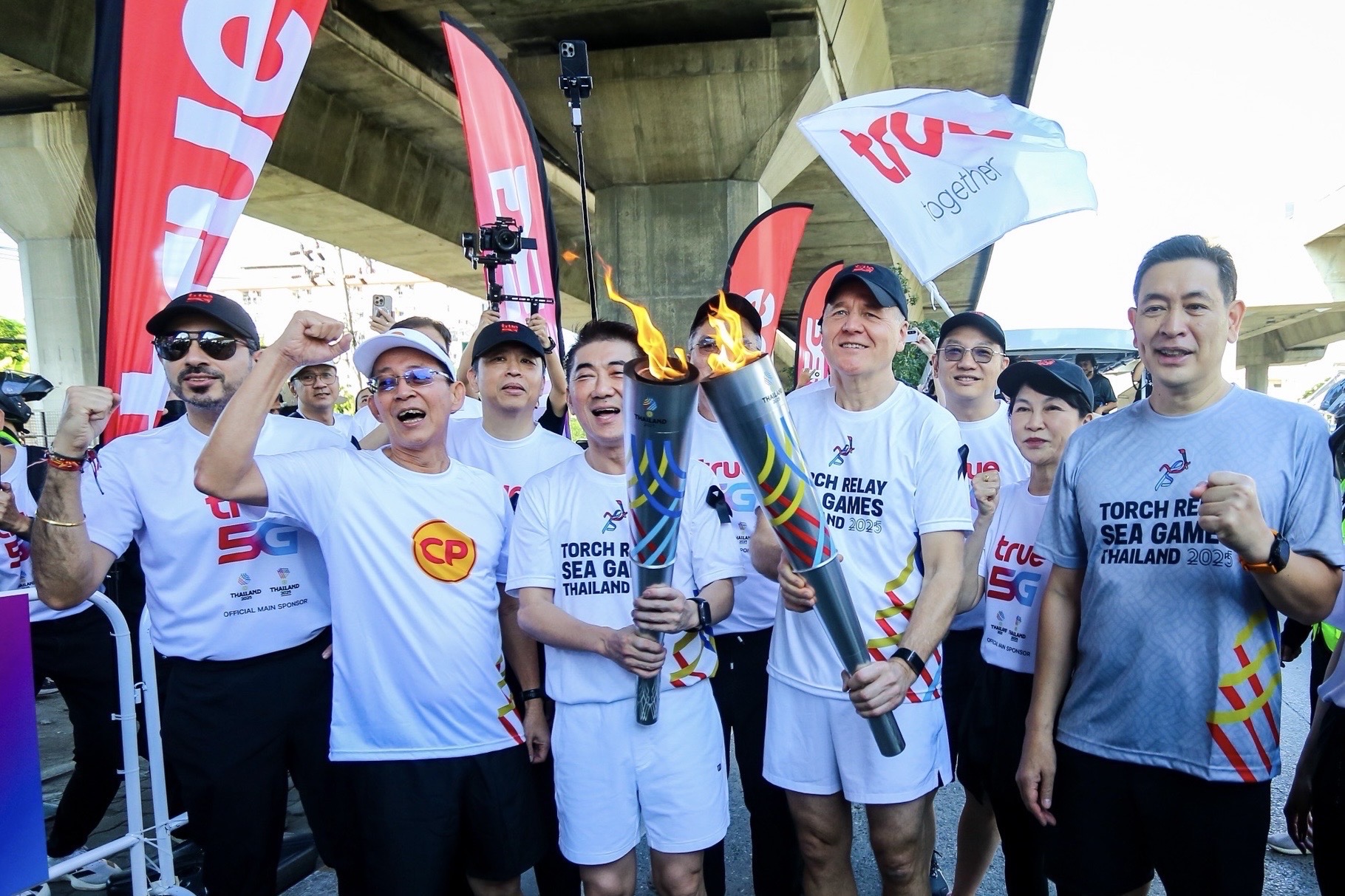Do People Shape Cities, or Do Cities Shape People? These are the guiding questions at the heart of Dynamic Cities via Mobility Data, a first-of-its-kind project in Thailand that uses anonymized mobility data from mobile phones to decode urban lifestyles across four major regions. The project’s goal is not just to understand how people live, move and interact with the city, but to offer concrete ideas for building cities that align with real life.
Held on 27 March 2025, at True Digital Park (West), the launch event welcomed urban designers, media, and city development advocates. Activities invited participants to explore the intersections of data and daily life, from a lifestyle quiz on the project’s website to a photo exhibition that visualized urban rhythms in four key cities. A panel discussion brought together six experts across disciplines to share ideas that may spark inspiration, reflection and, ideally, real-world action.
This article captures the essence of six expert perspectives from diverse fields, presented at a recent forum aimed at inspiring new ideas and practical applications for better cities.
“When Data Moves, Cities Change” An exploration of how Mobility Data can drive societal progress and improve the quality of urban life,
presented by Mr. Chakkrit Urairat, Chief Corporate Affairs Officer of True Corporation Plc.
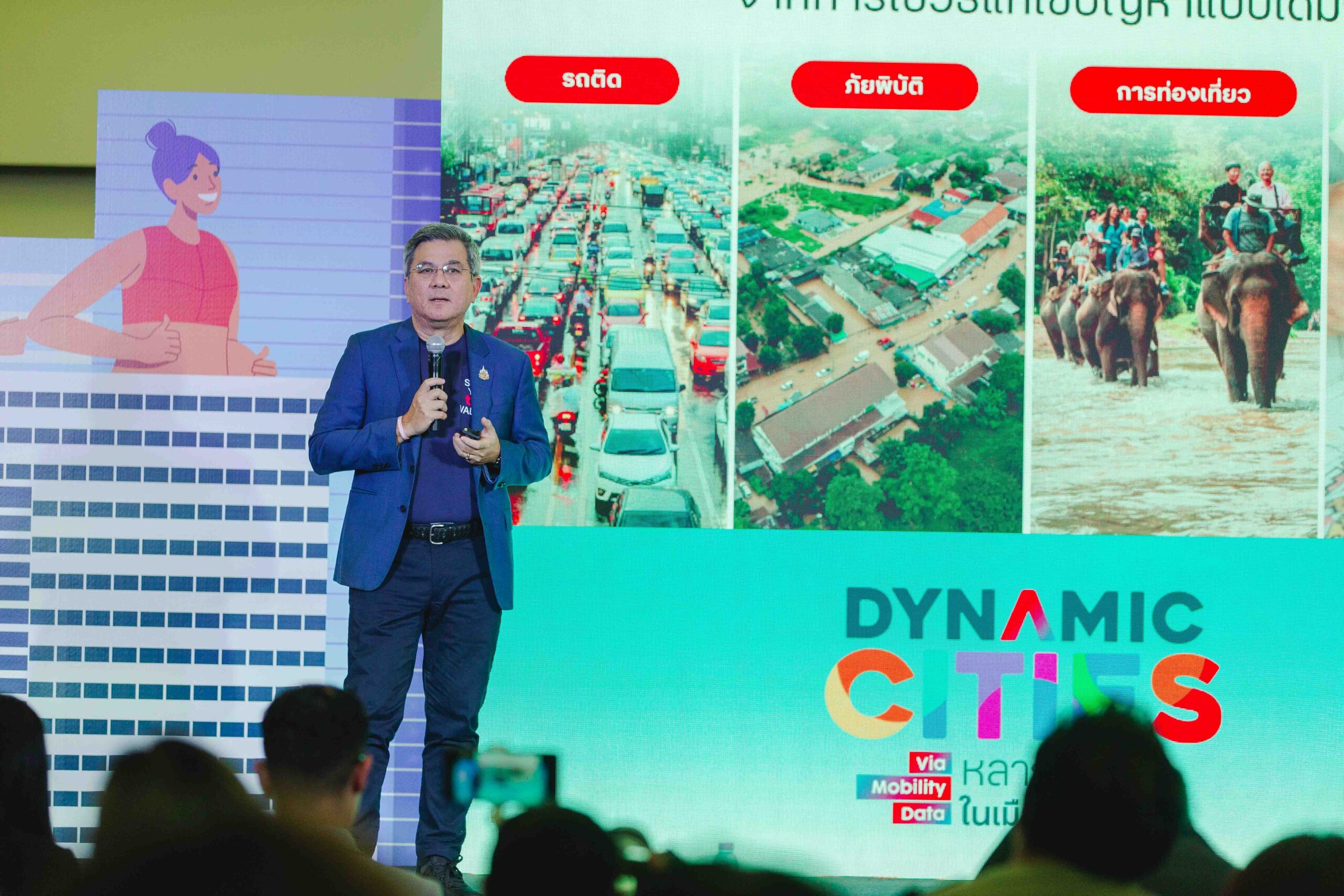
In the past, attempts to solve urban problems often revolved around the same old methods and data—whether it was traffic jams, flooding, or inequality. As a result, the outcomes rarely changed. Chakkrit sees Mobility Data as a new key to planning cities that truly reflect how people live. Mobility Data, gathered from real time mobile phone usage, provides a clearer view of how people move through their day. It reveals not only where people are, but where they come from, where they go, at what times, whether they are in crowded areas, and what other options they might have.
This data is processed in a way that keeps individuals anonymous, in full compliance with Thailand’s Personal Data Protection Act. When used with care and insight, it can support city planning that fits the lifestyles of people from all walks of life. This is why True Corporation launched the Data Playground—a space for collaboration that opens new perspectives on how data can be used. The initiative invites government agencies, universities, researchers, and the public to work together and apply Mobility Data in ways that help shape a society that listens to its people and moves toward a better future.
“Do People Shape Cities, or Do Cities Shape People?” A look into the rhythms of life in four major Thai cities through the lens of everyday movement and activity,
presented by Adisak Kantamueanglee, Deputy Director of the Urban Design and Development Center (UddC), Chulalongkorn University
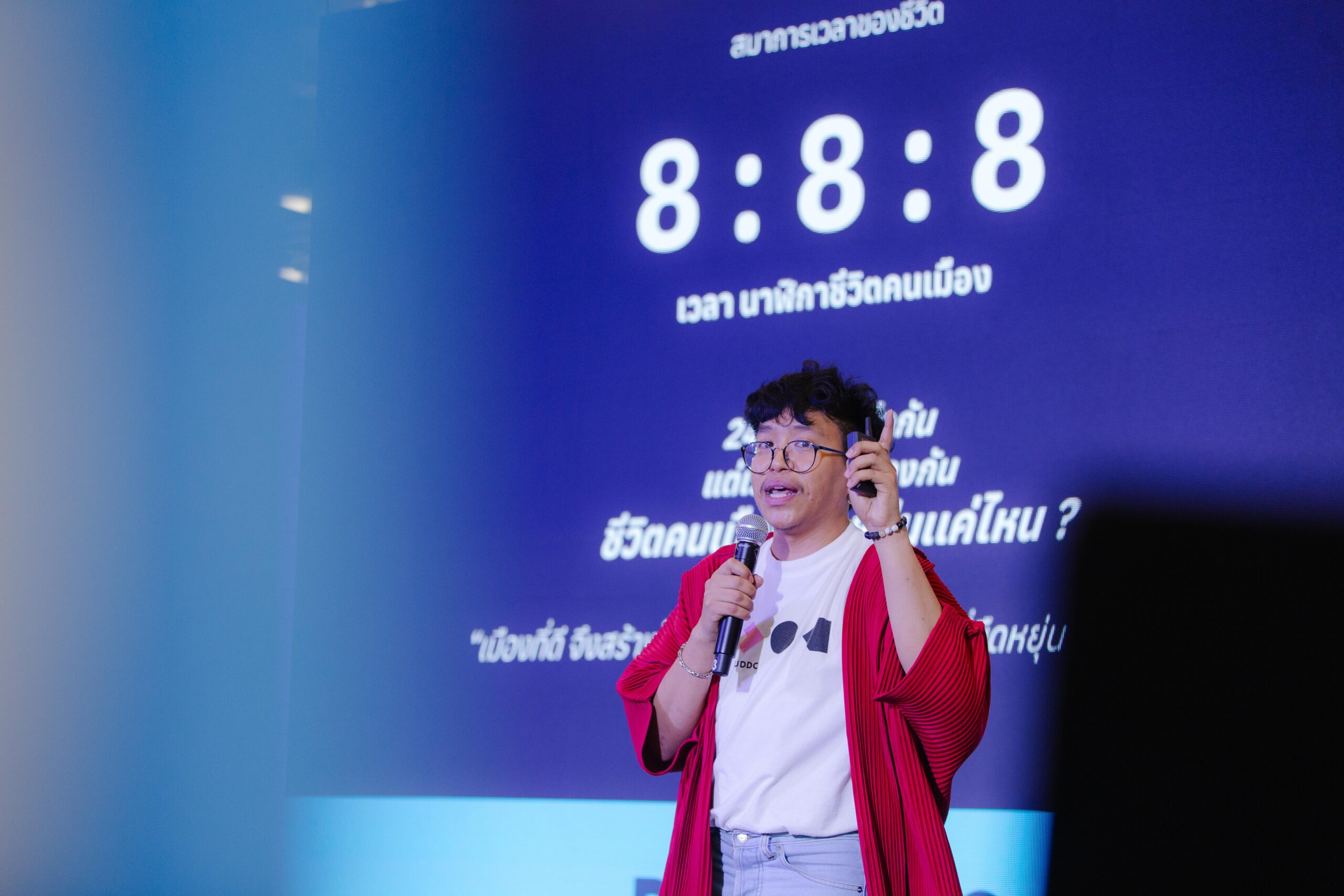
Cities Are About People
The dynamic nature of a city lies in its people and the way they constantly interact with urban space. That is why Mobility Data and Cellular Data can offer deeper insights into urban lifestyles than ever before. The project Dynamic Cities via Mobility Data explores four major cities—Bangkok, Chiang Mai, Khon Kaen, and Songkhla-Hat Yai—by analyzing the everyday rhythms of city life. Key findings include:
In Bangkok, people work an average of 8.9 hours per day, yet have only 4.5 hours of flexible time for other activities. In contrast, residents of Chiang Mai and Khon Kaen enjoy significantly more flexibility—around 6.3 to 6.4 hours per day.
When living and working spaces are located near each other—such as in Phra Khanong, Ramkhamhaeng, Lat Phrao, or Bang Kapi—commute times tend to decrease, creating better life balance.
The data also reflects age-based clustering. Students tend to live near educational institutions, first jobbers in more accessible residential zones, while seniors often reside in familiar old towns or suburban neighborhoods.
In Bangkok, 12 neighborhoods were identified as areas where people of all generations can comfortably live together. These include Lat Phrao, Bang Sue, Pinklao, On Nut, Wongwian Yai, and Huai Khwang.
Each City Holds Unique Potential for Development
In the final part of his presentation, Adisak connected the study’s findings to tailored urban design strategies that reflect the distinct context of each city:
Bangkok: Strengthen “capillary neighborhoods” by bringing housing closer to workplaces and improving walkability through better pedestrian infrastructure.
Khon Kaen: Transform urban ponds into central hubs for city life, linking the local economy, communities, and public well-being.
Chiang Mai: Embrace the idea of “cultural sanctuaries that drive the economy” by using temples as shared spaces that connect spirituality, tradition, and income-generating activities.
Songkhla – Hat Yai: Develop creative districts and new job markets to encourage first jobbers to stay and build their lives and careers in their hometowns.
“Who Are We Building For?” A panel discussion led by true city builders who still believe in the power of change and are working to move cities toward becoming inclusive and welcoming places for all
“Who Are We Building For?” This powerful question was the heart of the panel discussion at the launch of the Dynamic Cities via Mobility Data project. The event created a space for urban practitioners from three additional regions to come together—not only as professionals, but as citizens and changemakers who still believe in the future of their cities.

Tansorn Pornpanyapat, a startup founder in urban development and a board member of the Thai Urban Planners Association, shared how Mobility Data is transforming the way urban policies are shaped, moving beyond guesswork and in-field interviews to more precise, evidence-based planning. He cited Khon Kaen as a case study—a city known as the “city of ponds,” with numerous ponds scattered across the urban landscape. These areas could naturally serve as public parks, yet the data reveals that green space per capita remains below standard and unevenly distributed. He emphasized that these ponds should be developed into truly accessible and functional public spaces that meet people’s everyday needs.
In the future, he believes that cities will no longer follow the traditional centralized model. Instead, each city will have its own unique character, and every neighborhood will have the potential to become a center of something—whether it be ideas, business, or ways of living.

Anawit Jitmana, an urban developer and communicator, and co-founder of City Connext and Hatyai Connext, believes that Mobility Data enables more meaningful communication about cities at the neighborhood level. It is especially useful for designing activities or content that resonate with university-aged youth, and it allows for more precise targeting of advertisements and campaigns.
From a city perspective, Hat Yai has grown from its roots in railway infrastructure and border trade, giving it a natural sense of urban bustle. At the same time, local shrines function as public spaces and cultural nodes, bridging the old and new parts of the city. Looking to the future, he sees great potential in the power of connection—linking new generations with older ones, connecting diverse stakeholders, and ensuring that communication continues to fuel the city’s momentum and identity.
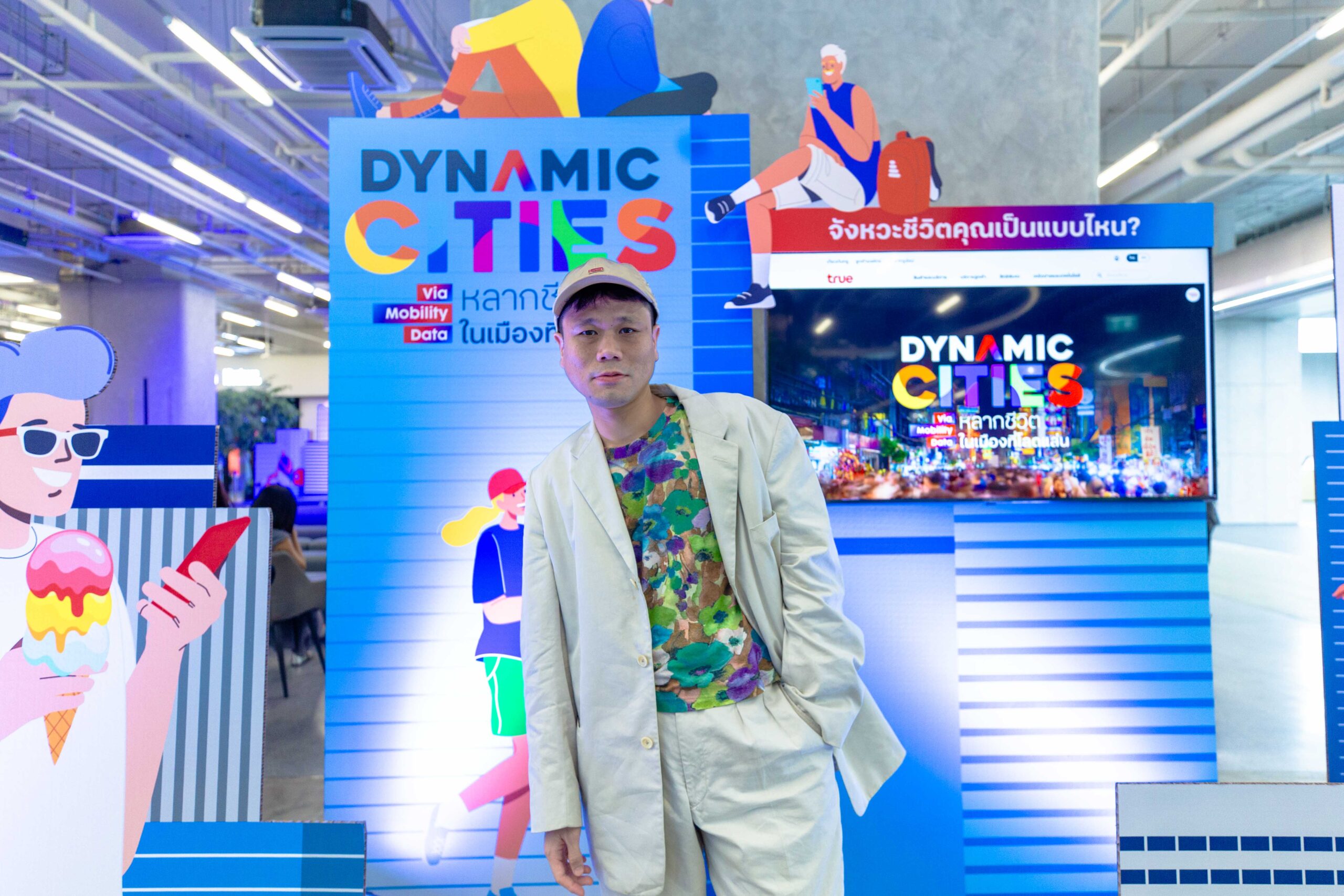
Assist. Prof. Dr. Chiranthanin Kitika, a researcher in urban community development and lecturer at the Faculty of Architecture, Chiang Mai University, sees cities as the product of people, and data as a mirror reflecting urban life. He encourages viewing Mobility Data through a “three-dimensional” lens, because the meaning of a city can shift depending on time, place, and who is using it. For example, a temple may serve as a peaceful retreat in the morning, and become a transit hub for teenagers in the evening. Chiang Mai, he explains, is home to many layers of culture, including long time residents connected to temples, an expanding middle class living in planned communities, and groups of digital nomads. While temples remain important cultural gathering places, they are not the only ones. Cafés, coworking spaces, and other creative areas now also serve as meaningful places for people to connect.
He proposes that in the future, cities will need three things working together: collaboration, where cities are seen as belonging to everyone; transformation, where data is turned into something understandable and practically useful; and integration, where urban design is approached through multiple disciplines rather than in isolated parts as in the past.
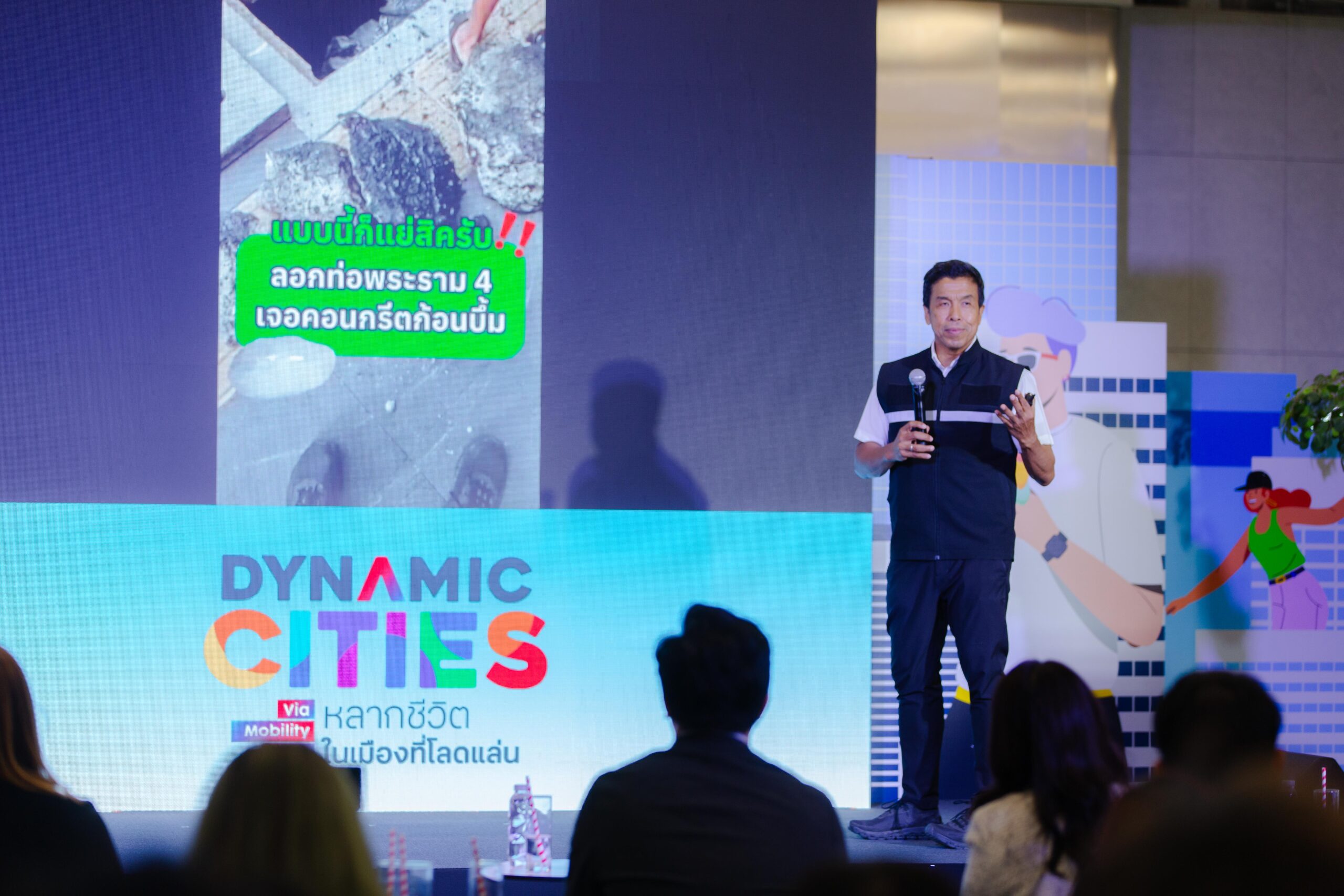
“A Better City, Built on People’s Voices” Urban development shaped by real lives and real data for a better future,
presented by Asst. Prof. Dr. Chadchart Sittipun, Governor of Bangkok
In an era where cities are driven by digital technology and data, the Governor of Bangkok has highlighted the word “empathy” as a key concept in urban policy design. He explains that digital data often functions as “sympathy data”—it reflects external problems, such as showing which roads are congested or where flooding occurs, but it does not capture the feelings or lived realities of the people affected. In contrast, “empathy data” comes from being on the ground, listening to people, and experiencing their challenges firsthand. This kind of data leads to more targeted, compassionate, and effective urban planning.
Traffy Fondue: The City’s Voice
“What is the city but the people?” — this quote from William Shakespeare was cited by Asst. Prof. Dr. Chadchart Sittipunt when speaking about Traffy Fondue, a digital platform that allows citizens to report urban problems directly through their smartphones. Once submitted, reports are automatically forwarded to the relevant agencies without needing to go through bureaucratic layers or rely on personal connections.
On its first day of operation (June 1, 2022), the platform received as many as 20,000 complaints. Since then, over 870,381 issues have been reported, with more than 705,000 successfully resolved. The average response time has been cut drastically—from around two months down to just two days.
A Good City Listens to Its People and Uses Data to Make Decisions
Beyond creating a systematic way to hear public voices, Bangkok also uses Mobility Data to plan and solve problems more efficiently. Examples include adjusting traffic signals at 72 intersections to match real-time traffic flow, developing a bike-sharing system to support last-mile connections with public transit, and beginning to design corridor-based road networks that prioritize traffic flow along main routes instead of relying on isolated intersection control.
At the same time, the city is actively promoting the use of Open Data by publishing project and budget information in formats that computers can read, setting up systems to track progress, and allowing the public to evaluate the performance of government services. The goal is to build a city that is truly transparent, responsible, and belongs to everyone.
Every perspective shared at the Dynamic Cities via Mobility Data Diverse Lives in Vibrant Cities event highlights one key message: data is a powerful tool for building cities that truly understand their people. A “good city” is one that emerges through collaboration, active listening, and the meaningful use of data, so that everyone can enjoy a better life in the place they call home.
———
Explore insights from ‘Dynamic Cities via Mobility Data’ Project at https://www.true.th/blog/data-playground/dynamic-cities/
Join the conversation at Data Playground for Human Impacts — a collaborative community dedicated to leveraging data to drive positive social change and create a better future for all: www.facebook.com/groups/dataplayground/







